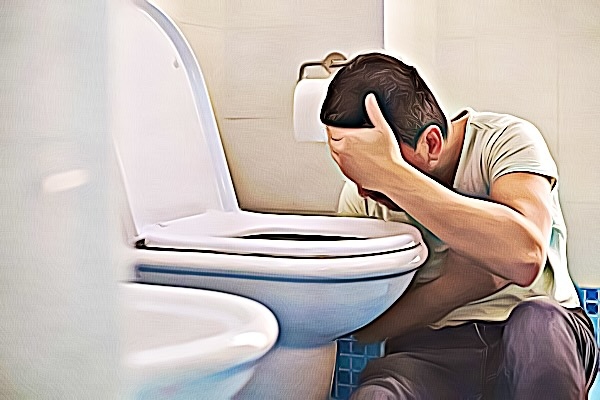Withdrawal symptoms can be difficult to deal with, but it’s a critical part of the healing process. Recovering from alcohol or drug addiction is never easy, but many would argue that the withdrawal process can be excruciating—both mentally and physically. For this reason, many end up developing post-acute withdrawal syndrome (PAWS). These happen during the first few months of recovery but can persist as the months pass. More often than not, it’s the leading cause of relapse.
PAWS can be rather tricky to understand, but it pays to understand exactly how and why it occurs. It’s usually present when an individual goes through a medically supervised detox, such as alcohol, marijuana, cocaine, opiates, and even benzodiazepines. Detoxification needs to be done in a controlled manner, but the withdrawal process itself leads to more than just discomfort.
Although mostly deemed as a temporary ailment, PAWS left untreated can lead to a myriad of health consequences, many of which can be life-threatening. The symptoms occurring can be enough to drive the individual back into the addiction, effectively causing them to relapse. Unfortunately, this affects anyone—even those fully committed to staying sober and turning their lives around.
If you or a loved one is currently experiencing post-acute withdrawal syndrome or wishes to avoid it from ever occurring, we’ve curated this comprehensive guide to help you. Explore the symptoms, causes, and ways you can get help to alleviate the effects of PAWS below:
What Are the Symptoms?
Withdrawal symptoms have always been an uphill battle for many recovering addicts around the world, but the onslaught of PAWS can make the recovery process seem even more impossible. The symptoms closely associated with the condition depends heavily on many different factors such as the following:
- The type of drug addiction or dependency
- Gender
- Physical size (Height and weight)
- Overall state of health
It’s also important to note that PAWS is unique, meaning that it operates differently from normal instances of withdrawal. It can be extensive and can last anywhere from months up to years.
Here are the most damaging symptoms of PAWS:
- Instances of aggression and irritability, which can lead to violence
- Bouts of hostility
- The onslaught of anxiety, depression, and extreme loneliness
- Severe mood swings
- Fatigue
- Low energy levels
- Insomnia
- Limited focus
- Limited sex drive
- Chronic pain

What Causes Post-Acute Withdrawal Syndrome?
Although most drugs are known to cause a PAWS occurrence, keep in mind that some drugs are more likely to cause the condition than others. Individuals are known to suffer from PAWs for a few days, but it can last for up to years—depending on the type of addiction and frequency of substance abuse.
This can be dangerous, especially since PAWS can push the recovering addicts to their breaking point—more often than not, this could mean relapses. Here are the drugs you need to watch out for, which experts believe to cause PAWS:
- Marijuana: Although marijuana is gaining popularity as a medical wonder, keep in mind that addiction can still be highly possible. Sudden discontinued use can lead to post-acute withdrawal syndrome, which can take a toll on the body.
- Opioids: Opioids have always been regarded as the world’s most dangerous addictive substances, and for good reason. More often than not, opioid addicts suffer through poor impulse control and intense cravings, which causes relapse.
- Methamphetamine: Methamphetamine is also deemed highly addictive, making PAWS likely to occur during the recovery phase.
- Cocaine: Cocaine is believed to be one of the powerful drivers of PAWS, especially since recovering addicts suffer through the condition for extended periods. Unfortunately, many of them end up with poor mental health conditions, such as depression and anxiety.
- Benzodiazepines: These substances fall under different brand names such as Xanax, Ativan, and Klonopin, making them highly accessible to the public. However, they’re also known to cause PAWS.
Because PAWS is a complex disorder, it can be quite challenging to determine a specific cause. There is no clear-cut answer to why exactly a person can develop the condition, but many experts suggest that it has something to do with changes to some regions of the brain responsible for stress response. Oftentimes, the causes overlap and eventually lead to this condition. PAWS is different for each person, and the manifestations and symptoms of the illness also differ.
Physiological changes in the body contribute heavily to the development of post-acute withdrawal syndrome. Chronic use of substances primarily affects the nervous system and can lead to chemical changes in this system. The nervous system may become so accustomed to a drug and may not be able to function normally without the substance. This imbalance often manifests itself through psychological conditions such as an overwhelming feeling of exhaustion, unusual cravings, irritability, and mood swings.
Substances also cause physiological changes in other parts of the body, including hormones and digestion. Sudden withdrawal from a substance can result in some imbalances in these systems as well, leading to symptoms like an upset stomach, an increased heart rate, nausea, or unusual bowel movements.
Aside from the physiological changes that the body undergoes through chronic substance use, there’s also the habit formation associated with it. When a person is accustomed to the routines and rituals of drug use, it may be hard for them to quit suddenly. Oftentimes, quitting a habit leads to anxiety, depression, changes to social interactions, and other symptoms that lead to PAWS.
Due to individual differences, there’s no telling when a person may experience manifestations of PAWS. Some may find themselves experiencing symptoms for years, while some may not even experience any complications. It’s best to enlist the help of professionals to provide a reliable layer of support and personalized care as they undergo the journey to sobriety.
Quitting the use of substances can be quite challenging to do alone, especially if one decides to do it cold turkey. The stress associated with withdrawal symptoms can be dangerous because it may lead to relapse or prolonged withdrawal symptoms in some instances.
How to Get Help
PAWS symptoms are mostly emotional and psychological, with doses of physical pain and discomfort. For these reasons, ongoing support is needed to ensure sustainable recovery and healing. Therapists, counselors, and even loved ones must be present, as this is the only way to reduce the intensity of the condition.
Professionals will usually begin treatment by educating clients about the pains of withdrawal, as well as the things to expect during the recovery process. Mutual support groups will also be recommended, as well as a careful analysis of disorders and patterns that may end up emerging. More importantly, however, a celebration of patience and small accomplishments must be given priority.
Medicines will also be prescribed to aid with specific drug problems, which can help reduce the cravings known to opioid addiction. Antidepressants will also help alleviate the depressive instances of PAWS, along with mood swings and anxiety. The condition can indeed be difficult to deal with, but help is readily available to those who ask for it.
Sources:
https://www.semel.ucla.edu/dual-diagnosis-program/News_and_Resources/PAWS
https://sbmi.uth.edu/heroes/documents/Post-Acute-Withdrawal.pdf?language_id=1
















